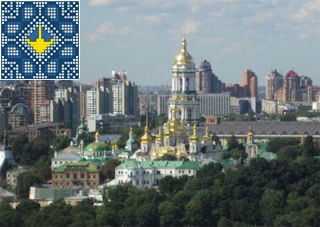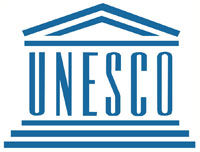|
Kiev Sights | Kyiv Pechersk Lavra (Kyievo-Pecherska Lavra) | UNESCO World Heritage Individual and group tours to Kiev |
In 1990 Kyiv Pechersk Lavra (Kyievo-Pecherska Lavra) was inscribed in UNESCO World Heritage List. From the records that the first monks established themselves on the far hill later called "Far Caves". First Church of the Nativity of the Virgin as well as the monastic cells was constructed underground in artificial caves. Over time the number of monks has increased significantly and cells appeared in the so-called "Near caves" under the near hill. In the 70 years of the eleventh century Kiev-Pechersk Monastery had intensive construction of stone structures. In the period 1073-1079 was built the main church of the monastery Cathedral of the Assumption who took a central place in its ensemble, in 1106-1108 - Trinity Gate Church, in 1108 - the refectory and in the end of the twelfth century the territory of the monastery done upgrading the stone walls. In the first century of its existence the monastery played an important role in the development of ancient culture and was the center of the chronicle. In the monastery worked well-known chroniclers - Nikon and Nestor. In 1240 during the invasion of Batu Khan Kiev-pechersk Monastery was destroyed and looted. In 1470 the monastery was gradually reduced but in 1480 the monastery once again destroyed the hordes of the Crimean Khan Mengli Giray. Then again it took many years to restore the monastery. In 1688 the Kiev-Pechersk Monastery receives a name - Kiev-Pechersk Lavra. In 1720 starts the construction of the Great Bell Tower of the Cathedral of the Assumption which became the compositional center of Kiev-Pechersk Lavra. During the Second World War, November 3, 1941 at 14 hours and 30 minutes in the Kiev-Pechersk Lavra was heard a massive explosion which destroyed the Cathedral of the Assumption. Unfortunately there is no documentary evidence, as well as actors, which could confirm the explosion of the cathedral by the Soviet or German troops. On the one hand the German troops could stage a blast, the guerrillas as a provocation, in order to conceal the looting of the Assumption Cathedral. On the other hand they destroyed only one church leaving intact the Bell-Tower and Refectory of the Kiev-Pechersk Lavra. The second is more plausible version of events is an explosion of the Assumption Cathedral by Soviet sappers who laid about 3 tons of explosives prior to the entry of German troops to Kiev. Judging by the nature of destruction explosives were laid in the basement of the Cathedral of the Assumption in the right room under the dome. In order to hide 3 tons of explosives had to be dug a large hole in the floor and lay the foundation of brick or build a false wall in the basement of the cathedral (which is easier to implement). Everything had to be natural even to experienced German sappers were unable to find a hiding place. In the reports mentioned about the two explosions one after the other - small and then very powerful which destroyed the Cathedral. Presumably in order to uncover a cache of explosives and was intended first low-power explosion. Then there was the running mechanism of the main explosion which left time for sappers to leave the Cathedral of the Assumption. Knowing the power of the explosion they rushed run out of the cathedral but have not calculated the time and were shot by German soldiers on the spot. Perhaps if they had stayed and ran out of the cathedral at the time of the explosion or a little later - that they had a chance to go unnoticed by the surrounding chaos fragments and shock waves that would distract the attention of German soldiers. If German soldiers deliberately wanted to blow up the Cathedral of the Assumption they are likely to be placed explosives in the basement under the central dome in the center of the cathedral. But the center of the explosion came just at the right side. Sapper who took the decision to place explosives lay decided to shift the center of the explosion as far away from the bell tower and the Refectory of the Kiev-Pechersk Lavra thus trying to minimize destruction of surrounding buildings. Who was this man whom we can be thankful for the salvation of the rest of the complex of Kiev-Pechersk Lavra ... it is unknown. Eyewitness Accounts "Regarding the explosions in Kiev Lavra. My mother Ariadna Shugaevsky who lived in Kiev Lavra in 1941 and was near the church when it exploded (she had to run from flying bricks). It was the Soviets whom mined the church and other buildings in Kiev. The explosion happened when the electricity was turned on. She learned about the mines from a Soviet Army officer who took one way that would have killed many Soviet citizens. He was disobeying orders. My Grandfather Valentin Shuhayevsky (the Ukrainian spelling) was a well known archeologist and numismatist in Russian Empire / Soviet Union. He was in charge of one of the museums in Kiev Lavra and they lived in an apartment in Kiev Lavra until the explosions started. The contents of the museums were then moved to another part of the city and my grandfather was involved. I’m doing research on this now. There are many stories, but I’m sure you have many stories from others as well." You could visit Kiev Sights - Kyiv Pechersk Lavra (Kyievo-Pecherska Lavra) with Tour "Kiev Sights" |

Book your tour or request information: |
|
- please, look at reviews of tourists about our tours
|
© 2011 - 2026 All rights reserved |



